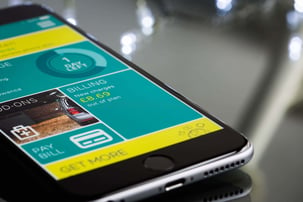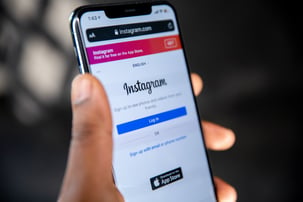Mobile App Development Lifecycle – Step-by-step Process

The latest figures from Statista tell us that there are now 2.7 million apps in the Google Play store, and Apple users have 1.82 million applications to choose from – generating billions of downloads each year.
Businesses that know how to make a mobile product that offers value to the users win a great advantage over the competition. That is why the knowledge of the mobile app development process – that is, knowing how any software company makes apps, from discovery to release and maintenance – is critical here. Let’s have a look at what this process looks like.
1. Defining the idea
Successful apps – like successful businesses in general – solve a genuine problem for customers. Consequently, the first step in the mobile app development process is to define the value proposition. The best way of doing so is by focusing on a problem of your target group.
That's why you need to start with a Problem Statement, a short description of the gap between the current state and the desired one.
Try answering a few questions: What issue will your app address? What needs will it satisfy? It will pay off to spend time and effort to make the answer as concise as possible: you should usually aim at one or two sentences.
Note that you might be tempted to address multiple problems, as technology opens so many opportunities. However, each problem you try to solve will probably require an additional feature, which will most likely double some other existing product functionality and, at the same time, add new levels of complexity to your project.
For this reason, you need to focus on the potentially most valuable feature. There will be time to add additional features later as soon as you get feedback from the first users and know much more about the market.
Example: UBER
- Problem: no communication between taxi drivers & their clients during the ride booking process; the ride booking process takes too much time & effort.
- Solution: a mobile app connects drivers with people who need a ride from point A to point B, eliminating any unnecessary agents (call centers) & allowing for direct communication and tracking of ride status.
Further reading:
- We’ve got 99 problems — does your app solve one? (The Next Web)
- 5 Business Problems That Mobile App Development Can Solve (Glance)
- Don’t Just Build a Mobile App, Solve an Important Problem (AllTopStartups)
2. Doing market research
Once you come up with what looks like a promising product idea, invest resources in verifying it before you start the development. At this stage, ask yourself a serious question:
Is a mobile application indispensable? Is it the best way to solve the problem?
This is a tricky one. There are many product categories where a mobile app is a no-brainer. Games, social media, and messaging apps are all pretty safe bets. However, if your idea requires a sophisticated tool for writing, editing content or sets of data, a website might be the better option.
When doing your market research, gather feedback from people involved in your future app's market – customers, middlemen, businesses offering complementary and supplementary services and products.
You also need to identify your target group, that is the people who have the problem you’re planning to solve. This analysis should include the demographics, motivations, behavior patterns, and goals of your buyer persona.
Here are some useful questions you need to ask at this stage of the mobile app development process:
- Who are the users? What are their preferences?
- What are the competitors doing? Do they have apps? If so, what features do they offer?
- What is the business model of the competitors’ apps?
- How are other apps marketed and promoted?
- What platforms do we need to support first?
- What are the timeline and budget for the app development?
Example: Hailo
Hailo is a British alternative to Uber. They wanted to compete with the market leader in NYC by offering lower prices for the traditional local ”yellow cabs.” Unfortunately for them, the majority of yellow taxi drivers didn't use a mobile phone, which dramatically lowered the number of cars available to Hailo users. A more in-depth user persona analysis would have saved Hailo a lot of time and money.
3. Wireframing
A wireframe is a scheme of an app. With wireframing, you can run user journey mapping workshops, visualize the final product fast, and decide what features you should work on.
The wireframe will serve as a blueprint that defines your app’s structure, content, and functionality. Wireframes don’t include any visual design elements, which may be distracting at this stage, and can be discussed and refined later, during the software development stage.
Wireframes focus entirely on the application’s information architecture and hierarchy – its usability, navigation, etc.
This stage primarily serves as the bridge between research and design. It often initially takes place on a whiteboard or paper, allowing you to visualize your app's user flow in a simple way.
Any changes can be made easily at this stage – it’s much simpler (and cheaper) to erase a few strokes on a whiteboard than it is to rewrite code later in the development process.
4. Prototyping
You can use natural app builders to create the first version of your app – an MVP – and collect the feedback.
Once you have the wireframes and the storyboard, it's time to make an interactive prototype. By using it, you will be able to verify your concept before starting the software development.
Prototyping is an important step in the app development process. With a prototype, you can evaluate design, gather feedback from target users and stakeholders, pitch your idea to investors (or decision-makers inside your organization). Also after a testing phase when you start building a final product it will be easier for software engineers to understand your business model and implement a better app.
Currently you can pick from many low and no-code app builders that will give you a whole set of tools that allow making apps with no coding skills. For example you can check out Glideapps or Thunkable
5. User interface (UI) and user experience (UX) design
With your application's framework sketched out and prototypes circulating, it's time to use the early feedback and get to work on the UI and UX design. There are many things to take into consideration here. Above all, the interface should be effortless and intuitive for your target group – it needs to be coherent with the apps they are used to.
Consistency is also essential – all views and user actions should "look and feel" the same. All views should follow the same style principles. If your central theme is white, then consider using the color in as many views as possible. Keep the user flow smooth and consistent. Make the navigation predictable and straightforward – the users should intuitively know where a button will take them.
From a UX perspective, it's also essential to carefully consider the use of things like animations and pop-ups. Too many animations, for example, can be distracting, whereas overusing pop-ups can interrupt user flow. Sometimes, it is better to simply display a message rather than force the user into an additional interaction to close the pop-up.
Finally, know your platform and stick to the official guidelines of the platform you are targeting. Consulting Google Material Design for Android and Human Interface for iOS will ensure you design your interface correctly for the respective platforms.
6. Development
Using the agile methodology, you can break up all the work into smaller milestones and build your app in a series of cycles. These weekly sprints include planning, development, testing, and review.
The development phase includes working on a few crucial areas:
- Frontend is the user side of the app. Working on it includes designing the layout, user interaction, navigation, graphics, and data processing.
- Backend is the part the user doesn't see. It encompasses areas such as data management, client-server communication, or access to the cloud.
The wireframes serve as a guide for the backend structures – APIs, servers, push notification services, etc. However, if your application is relatively small and not heavily dependent on cross-platform interaction, it may make sense to use a Mobile Backend as a Solution (mBaaS) platform such as Firebase.
During the development phase, software engineers can suggest rethinking some designs, a feature or a UX element. Removing redundant elements can save you time (and money).
Testing early and often is the only way to ensure robust, functional, and high-performance mobile apps. A Quality Assurance (QA) Specialist should join the team as soon as possible, to ensure the app is unit tested for usability, compatibility, security, stress, and performance.
7. Setting up goals and analytics
The data on how people interact with the product, which parts of it are used more, and where they get stuck or quit out of frustration, is priceless. Before you receive these valuable insights, you are practically blind.
Based on the user analytics, you can fix errors, add features, improve functionalities and UX elements.
Finally, you can focus on the engagement of the right group and track your business goals.
Further reading:
8. Publishing
There's no need to rush towards the deployment. You can gather feedback using your prototype, and discover the market and target group needs during workshops with stakeholders.
Once you have tested the app and set up the goals and analytical tools, you can consider it ready for the official launch. The first thing you need to do before you publish is to make sure you’ve configured the release to comply with the current App Store and Google Play policies.
Write a high-quality description emphasizing the value proposition of your app, and treat it as the center of all marketing materials. Create high-resolution images of your application for app stores, as well as a high-quality written description, and other marketing materials.
You should be patient when it comes to store approval. This is especially important when publishing on the App Store. Apple manually reviews all apps submitted, and it usually takes a few days before they accept your app.
Sometimes, Apple requests alterations to comply with various regulations before being granted entry. With Google, your app will usually be live in the store on the day of submission.
Further reading:
9. Promoting
The mobile app market is extremely competitive. Although people spend, on average, almost three hours a day with a cell phone (as the US data shows), their attention is divided between different products, and the most popular social media, music, and social media apps take the lion's share of their attention.
You need to get through with your value proposition message to the right audience. Mobile app promotion requires investment, great timing, and well-rounded, easy-to-understand messaging.
When planning a marketing or PR campaign, knowing your target group is essential. Another good practice is to release most of your promotion budget after receiving the feedback, verifying if you defined the target group correctly, and, if possible, fixing the most critical issues that might have come out in your minimum viable product (MVP).
It's easier to manage your marketing efforts once your product gains traction, and you can start measuring the return on investment in ads and promotions.
10. Maintenance
Mobile app development doesn't end with the launch. The mobile app development process is a continuous endeavor. There are several activities, you need to focus on during the maintenance phase like fixing the bugs and other issues, responding to the feedback and feature requests from users, as well as adjusting the infrastructure to handle the growing popularity.
The app must respond to changes in technology, new opportunities, and challenges that come up when app stores introduce new requirements (just like it happened with Sign in with Apple recently).
If your app succeeds, maintenance tasks will never end after the feedback starts to flow from the users for the initial release. With adequate analytical tools, you can measure business goals and optimize the app’s performance.
As time goes by, you'll need to revisit every step of the process to boost the growth and retention (minimize uninstalls), keep up with the competition, and monetize your app.
Your mobile app development
There are many steps to the mobile app development process and lots of crucial decision making and testing involved along the way. To stand out from the crowd ,you need deep research and great expertise to be sure that your product meets the market needs well.





















